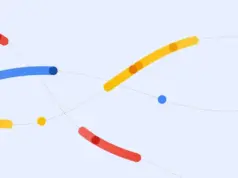
While the news cycle might make things feel like we’re caught in an ever-growing dumpster fire, for certain states across the country, those flames are anything but metaphorical. This week, 15 different states were hit with dozens of massive, roaring wildfires that scorched hundreds of thousands of acres of land while putting tens of millions of people in harms way. And by all accounts, things are only going to get worse from here.
Tech companies can’t really douse a roaring fire with digital smarts alone, but some Silicon Valley startups have spent the past few years tinkering with tools to track where fires are and where they might be headed next. And now Google’s throwing its hat into the ring: Today, the company announced plans to roll out what can only be described as a wildfire-mapping network.
Using Google Search to look up questions about a wildfire will not only be met with a series of increasingly alarming news segments on the subject, but also a real-time map outlining the boundaries where that particular fire is raging. Folks that have Google Maps installed on their phone, meanwhile can get handy alerts telling them if they’re traveling a little too close to an active blaze, and potentially safer paths to their destination.
The company put out a pretty detailed Medium blog that goes into the nitty-gritty of how these maps get made, but the short version is just … satellites. Using data pulled from the National Oceanic and Atmospheric Administration’s massive network of satellites circling the globe and then overlaying that onto the already massive maps compiled by the Google Earth Engine, the company is able to track where the fire’s roaring, and approximate how far out it might spread. As the company’s blog explains, the NOAA’s satellites are engineered to detect “hot spots” across the Earth’s surface, which naturally include wildfires.
As Yossi Matias, the engineering VP behind Google’s emergency and crisis response tech describes in the company blog, this is an idea that’s been bouncing around his head for roughly a decade. Back in 2010, he was working out of a Google campus in Haifa, Israel, when the country was struck by the worst wildfire that it’d ever experienced. The epicenter of the blaze, over in Mount Carmel, was barely a half hour drive from where Matias and his team was sitting. When they went online to find out what the hell was happening—and whether they were safe—the web turned up barely any information at all, aside from “some details confirming what we already knew—a large fire was taking place outside of our door,” he writes.
That’s what initially inspired him to push for more emergency-response features in Google search, starting with full-blown SOS alerts back in 2017 to direct people towards authoritative intel during a natural disaster. Since then, the company’s moved onto other forms of climate-crisis control: using its mapping engine to predict where floods might strike or turning every Android device into a mini-seismometer in order to better detect earthquakes.
G/O Media may get a commission
According to Matias, this new fire-forecasting feature’s been in the works for about a year, first being piloted as a tool for first responders stuck battling the brutal wave of wildfires that hit California in 2019. After getting the go-ahead from authorities in California and Colorado at the time, the company announced that it’d be rolling out the boundary maps into Search and Maps later today.
With climate change turning up the temperatures around the world and sparking record fires from Australia to California to the Arctic this year alone, the feature should useful for just about everyone.
Source: gizmodo.com








